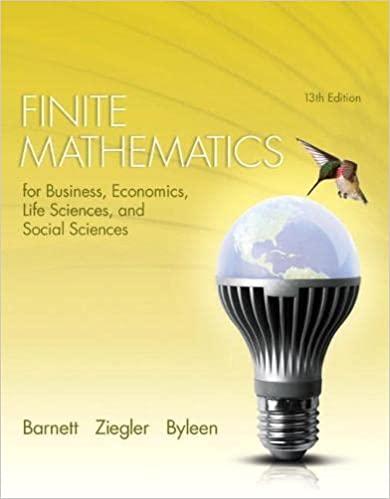Question
Hello, the question is as follows.. Suppose the company's claim was different that the one above. Suppose they claimed that 20% of their mixed nuts
Hello,
the question is as follows..
Suppose the company's claim was different that the one above. Suppose they claimed that 20% of their mixed nuts are cashews, 30% are almonds, and the rest are peanuts and that a machine counts out exactly 20% cashews, 30% almonds, and 50% peanuts into each bag of 200. To test their claim I bought a package of their mixed nuts. It contained 200 nuts. I counted 25 cashews, 50 almonds, and 125 peanuts.
Answer choices...
Context:The null hypothesis is that the observed data fits the model "good". Now, which of the following best describes the model. In other words what is the null box, how many draws and with or without replacement?
Answers:
- The null box has millions of tickets, 20% marked cashews, 30% marked almonds, and 50% marked peanuts. 200 tickets are randomly drawn without replacement.
2.The null box has 200 tickets: 25 marked cashews, 50 marked almonds, and 125 marked peanuts. 200 tickets are randomly drawn without replacement.
3.The null box has 200 tickets: 40.00 tickets marked cashews, 60.00 marked almonds, and 100.00 marked peanuts. 200 tickets are randomly drawn without replacement.
4.The situation does not translate into random draws from a null box because there is no random process involved in the situation we are investigating.
5.The null box has 10 tickets: 2 tickets marked cashews, 3 marked almonds, and 5 marked peanuts. 200 tickets are randomly drawn with replacement.
Step by Step Solution
There are 3 Steps involved in it
Step: 1

Get Instant Access to Expert-Tailored Solutions
See step-by-step solutions with expert insights and AI powered tools for academic success
Step: 2

Step: 3

Ace Your Homework with AI
Get the answers you need in no time with our AI-driven, step-by-step assistance
Get Started


